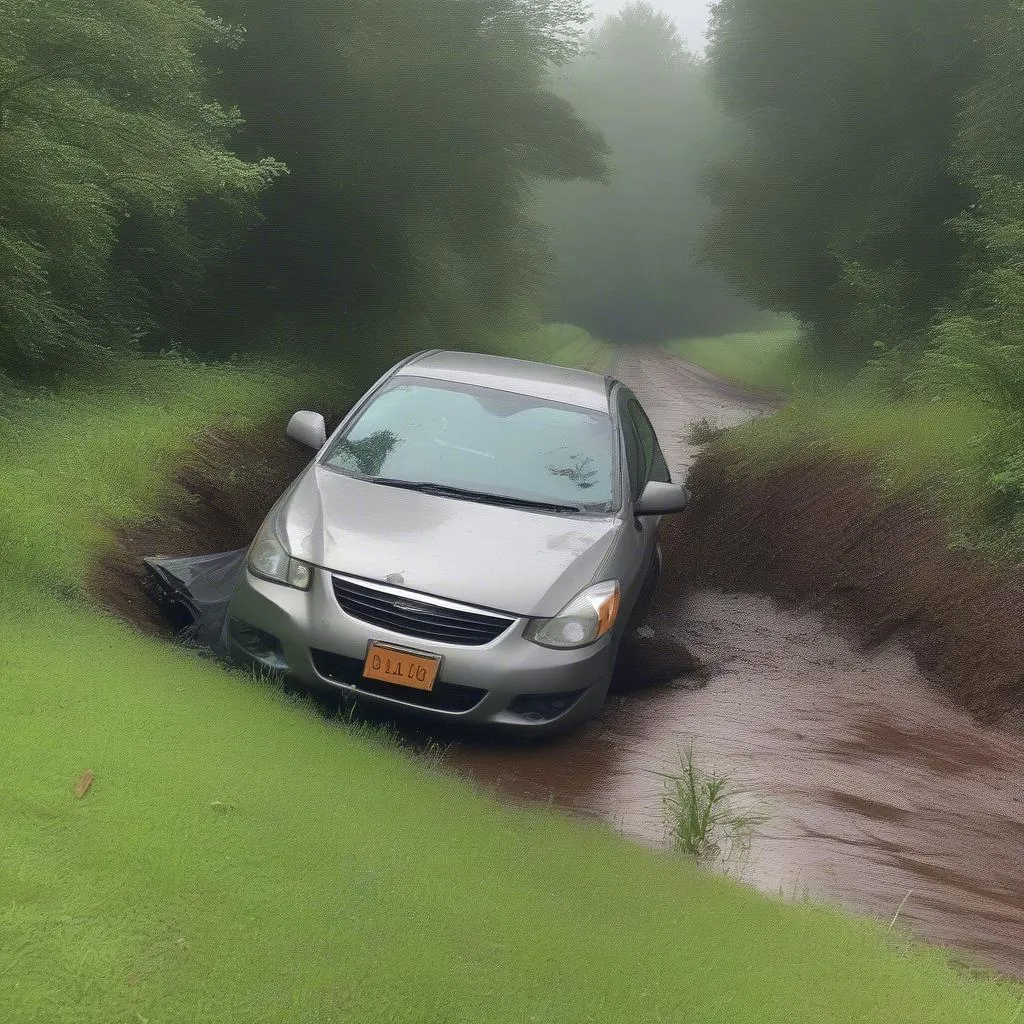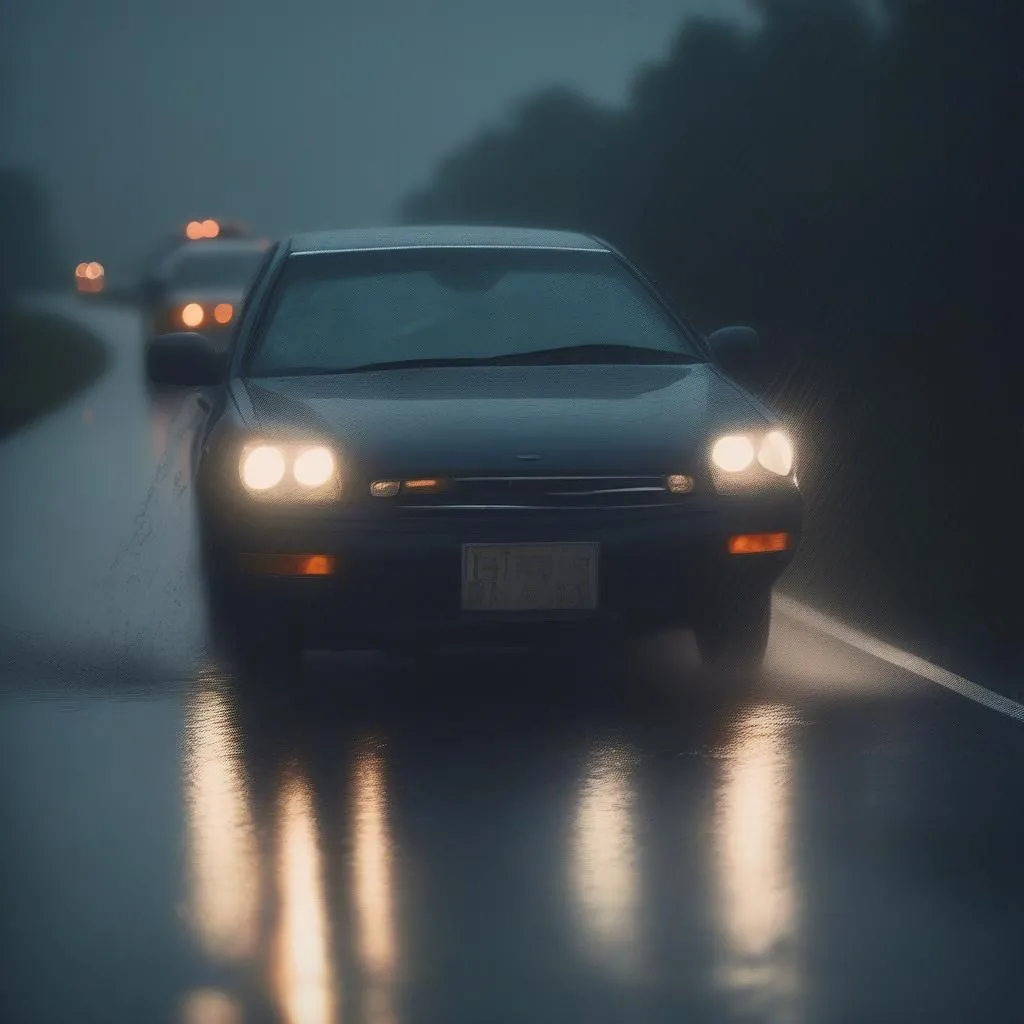Imagine this: You’re driving down a highway on a rainy day, the asphalt slick with water. Suddenly, your car starts to drift uncontrollably, spinning out of control. You’ve just experienced hydroplaning, a dangerous situation that can lead to single-car accidents.
What is Hydroplaning?
Hydroplaning occurs when a vehicle’s tires lose contact with the road surface due to a layer of water between the tire and the pavement. This happens when the water pressure between the tire and the road surface exceeds the tire’s ability to displace it.
From an Automotive Technician’s Perspective:
As an automotive technician specializing in electrical systems, I can tell you that hydroplaning is a dangerous phenomenon that can be exacerbated by faulty tire tread, low tire pressure, or even worn-out suspension components. These factors can all affect a vehicle’s ability to grip the road surface and displace water.
From an Engineering Standpoint:
Hydroplaning is a result of basic physics. When a car travels over a wet surface, the tires need to displace water to maintain contact with the road. However, if the vehicle’s speed exceeds the tire’s ability to displace the water, a thin layer of water forms between the tire and the road, causing the tires to lose grip.
Economic Impacts:
Hydroplaning accidents can lead to significant economic losses, including vehicle damage, medical expenses, and lost wages. It’s important to take precautions to prevent hydroplaning accidents to mitigate these costs.
Causes of Single-Car Accident Hydroplaning
Hydroplaning can be caused by several factors, including:
- Speed: Higher speeds create a larger volume of water that needs to be displaced, increasing the risk of hydroplaning.
- Tire Tread: Worn or damaged tires have less tread depth, reducing the tire’s ability to displace water.
- Tire Pressure: Under-inflated tires have a larger contact patch, making them more susceptible to hydroplaning.
- Water Depth: Deeper water increases the likelihood of hydroplaning, especially at higher speeds.
- Road Condition: Smooth roads, such as highways, can exacerbate hydroplaning because they offer less friction for the tires to grip.
- Weather: Heavy rainfall or thunderstorms can create conditions that increase the risk of hydroplaning.
Common Questions About Single-Car Accident Hydroplaning
Here are some common questions that drivers often have about hydroplaning:
- Can hydroplaning happen in light rain? Yes, even a light drizzle can create enough water on the road surface to cause hydroplaning, especially at higher speeds.
- Does hydroplaning always lead to an accident? Not always. If you’re driving slowly and maintain control of your vehicle, you may be able to recover from hydroplaning without an accident. However, it’s essential to remain vigilant and prepared.
- What should I do if I experience hydroplaning? If you experience hydroplaning, remain calm and do not slam on the brakes. Gently ease off the accelerator and allow the vehicle to slow down naturally. Do not oversteer, as this can make the situation worse.
How to Avoid Single-Car Accident Hydroplaning
Here are some tips for preventing hydroplaning accidents:
- Reduce Speed: Slow down in wet weather conditions, especially on highways or roads with smooth surfaces.
- Maintain Tire Tread Depth: Ensure your tires have adequate tread depth to properly displace water. The minimum tread depth requirement varies by state.
- Check Tire Pressure: Regularly check your tire pressure and inflate them to the manufacturer’s specifications.
- Avoid Standing Water: If possible, avoid driving through large puddles or standing water.
- Be Prepared for Sudden Changes: Be aware of your surroundings and be prepared to react quickly if you encounter hydroplaning conditions.
Dealing with a Single-Car Accident Hydroplaning
If you are involved in a single-car accident caused by hydroplaning, take the following steps:
- Ensure Safety: Make sure everyone involved is safe and assess the damage to your vehicle.
- Call for Help: Contact emergency services if necessary.
- Document the Accident: Take pictures of the accident scene, including your vehicle and any injuries.
- Exchange Information: If applicable, exchange information with any witnesses or other parties involved.
- Contact Your Insurance Company: Report the accident to your insurance company as soon as possible.
Additional Questions Related to Single-Car Accident Hydroplaning
- What are the warning signs of hydroplaning? The car may feel “light” or “floating”, you may hear a “whooshing” sound, and the steering wheel may feel unresponsive.
- How can I tell if my tires have enough tread depth? Use a penny test: Insert a penny into the tread groove with Lincoln’s head facing down. If you can see the top of Lincoln’s head, your tire needs to be replaced.
- Is hydroplaning more common on certain types of roads? Yes, smooth roads like highways are more prone to hydroplaning than rough roads, which offer more friction.
Additional Resources:
- National Highway Traffic Safety Administration (NHTSA): The NHTSA provides comprehensive information about hydroplaning and other road safety issues.
- National Safety Council (NSC): The NSC offers valuable resources and tips for safe driving in wet conditions.
Need Help with Automotive Diagnostics?
If you’re experiencing issues with your vehicle’s electrical system or need help with diagnostics tools, our team of expert technicians can provide 24/7 support. Contact us via WhatsApp at +84767531508.
Conclusion
Hydroplaning is a serious hazard that can lead to single-car accidents. By understanding the causes and taking precautions, you can significantly reduce the risk of hydroplaning and stay safe on the road. Remember, driving safely in wet weather conditions is crucial for your own well-being and the safety of others.
We encourage you to share this information with friends and family and explore other resources on our website for more valuable information about automotive safety. Let us know your thoughts in the comments below!
 Single-car accident caused by hydroplaning
Single-car accident caused by hydroplaning
 Penny test for tire tread depth
Penny test for tire tread depth
 Safe driving in wet weather conditions
Safe driving in wet weather conditions